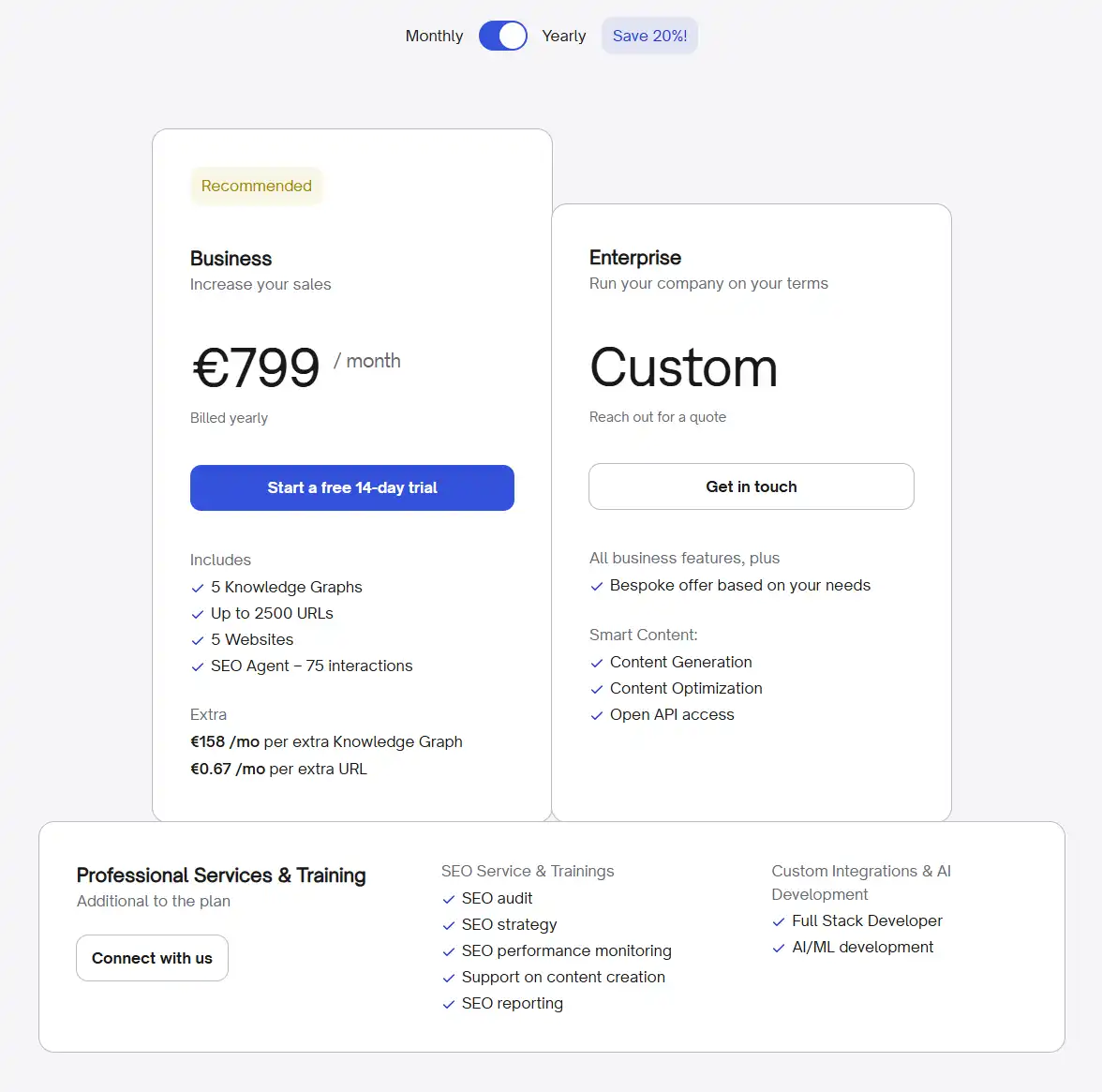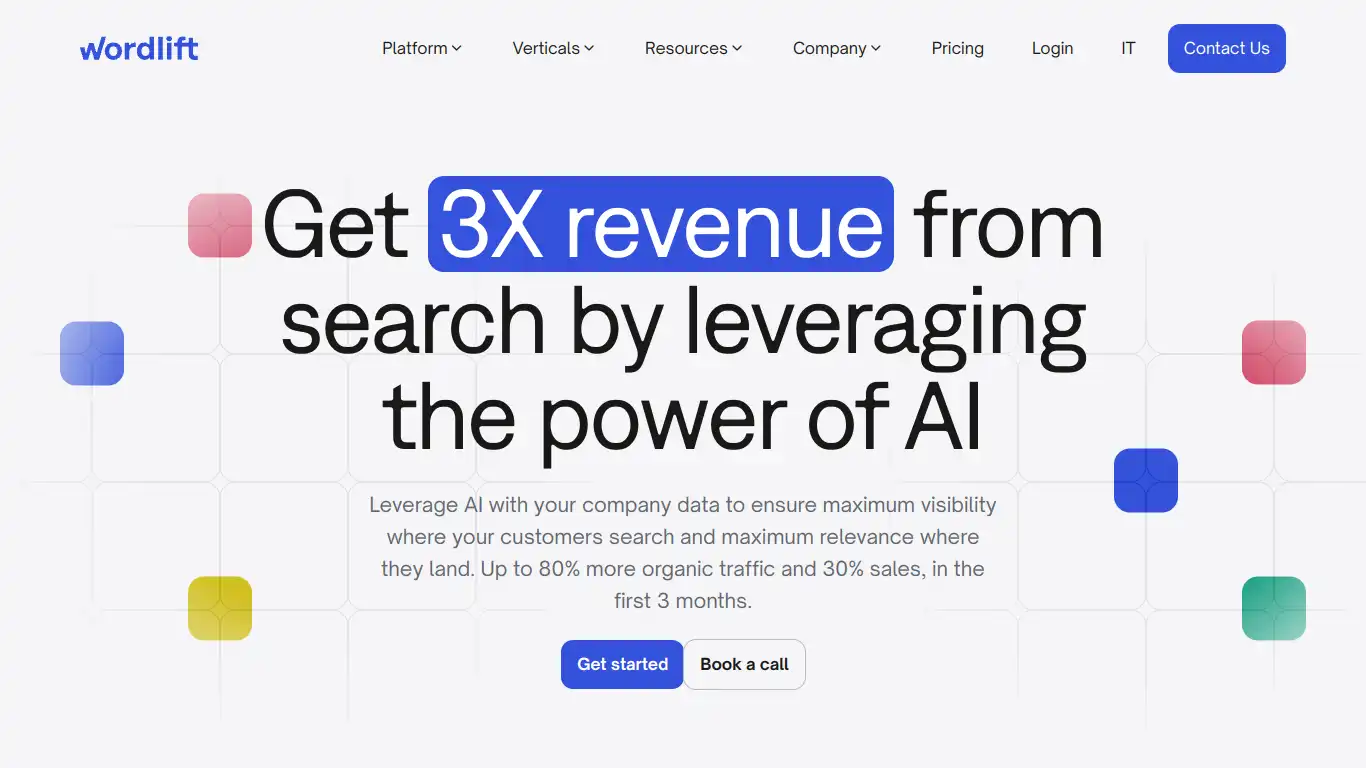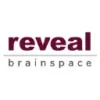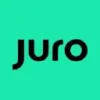WordLift uses AI and semantic technology to enhance your content with structured data, boosting SEO and helping search engines understand your website.
Are you struggling to make your content more visible online? Feeling frustrated that your well-crafted articles aren’t reaching the audience they deserve? If search engine optimization feels like an overwhelming maze, you’re not alone. Today’s digital landscape demands content that not only appeals to human readers but also communicates effectively with search engines. This is where WordLift steps in to bridge that gap, helping your content work smarter, not harder.
Introduction to WordLift
What is WordLift and its Purpose?
WordLift is an AI-powered SEO tool that brings the power of semantic technology to content creators. At its core, WordLift helps websites communicate more effectively with search engines by structuring content in a way that machines can understand. It transforms regular content into linked data, creating a knowledge graph that gives search engines the context they need to better interpret and rank your pages.
Unlike traditional SEO tools that focus primarily on keywords, WordLift takes a more holistic approach by implementing schema markup and linked data principles automatically. Its purpose is two-fold: to enhance your website’s visibility in search results and to improve the user experience through intelligent content organization and internal linking.
The tool essentially acts as your personal SEO assistant, analyzing your content and suggesting ways to enrich it with structured data that helps search engines understand what your content is about, who it’s for, and how it relates to other topics.
Who is WordLift Designed For?
WordLift caters to a diverse range of users, though it’s particularly valuable for:
- Content creators and publishers who want to increase their organic traffic without mastering technical SEO coding
- Digital marketers looking to optimize content for featured snippets and rich results
- E-commerce businesses wanting to improve product visibility in search results
- WordPress website owners seeking a user-friendly SEO solution (WordLift offers a dedicated WordPress plugin)
- News organizations and media sites that produce high volumes of interrelated content
- SEO teams who want to implement structured data at scale without manual coding
The tool is especially beneficial for content-heavy websites where maintaining consistent internal linking and topic organization becomes challenging as the site grows.
Getting Started with WordLift: How to Use It
Getting started with WordLift is straightforward, especially if you’re using WordPress:
- Sign up and installation: Create an account on WordLift.io and install the plugin on your WordPress site. For non-WordPress users, WordLift offers API access.
- Content analysis: After installation, WordLift automatically analyzes your content as you write, identifying entities (people, places, events, concepts) mentioned in your text.
- Entity enrichment: The tool suggests relevant entities to add to your content, allowing you to create structured data that search engines can understand.
- Knowledge graph creation: As you continue to use WordLift, it builds a connected knowledge graph of your content, improving internal linking and topic clustering.
- Schema markup implementation: WordLift automatically adds appropriate schema markup to your pages, increasing your chances of winning rich results in search.
The interface integrates seamlessly with the WordPress editor, appearing as a sidebar where you can interact with the tool’s suggestions while writing or editing content.
WordLift’s Key Features and Benefits
Core Functionalities of WordLift
WordLift offers a robust set of features designed to enhance your SEO efforts:
- Entity Recognition and Linking: Automatically identifies entities (people, places, concepts, organizations) in your content and suggests relevant internal links.
- Schema Markup: Implements structured data markup without requiring you to write a single line of code, helping search engines understand your content better.
- Knowledge Graph Creation: Builds a connected network of your content topics, improving site navigation and search engine understanding.
- Content Analysis: Provides insights into how well your content covers a topic and suggests improvements.
- FAQ Schema Generator: Creates schema-marked FAQs that can win featured snippets in search results.
- Image Tagging: Automatically adds appropriate alt text and metadata to images, improving accessibility and image search performance.
- Related Content Suggestions: Recommends relevant content from your site to link to, improving user engagement and reducing bounce rates.
- Vocabulary Management: Helps maintain consistent terminology across your website.
Advantages of Using WordLift
Using WordLift brings several significant benefits to website owners:
- Improved Search Visibility: By implementing structured data, WordLift helps your content appear in rich snippets, knowledge panels, and other enhanced search results.
- Time Savings: Automates technical SEO tasks that would normally require developer intervention.
- Enhanced User Experience: Creates better internal linking and content organization, helping users find related content more easily.
- Competitive Edge: Provides semantic SEO capabilities that many competitors may not be utilizing.
- Reduced Bounce Rates: Better internal linking keeps users engaged with your site longer.
- Content Gap Identification: Helps identify topics you should cover to build a more comprehensive content strategy.
- SERP Feature Optimization: Increases chances of appearing in featured snippets, knowledge panels, and other prominent search features.
Main Use Cases and Applications
WordLift can be applied to various content marketing scenarios:
- Blog Optimization: Enhancing existing blog content with structured data and improved internal linking.
- E-commerce Product Pages: Adding product schema to improve visibility in shopping-related searches.
- News Websites: Creating connected topic clusters that help search engines understand the relationships between different news stories.
- Knowledge Bases: Building comprehensive, well-linked information resources with clear topic relationships.
- Local Business Websites: Implementing local business schema to improve visibility in local search results.
- Content Reorganization: Restructuring existing content libraries for better topical relevance and user navigation.
- Event Websites: Marking up event information to appear in event search features.
Exploring WordLift’s Platform and Interface
User Interface and User Experience
WordLift’s interface is designed with simplicity in mind, making advanced SEO techniques accessible to non-technical users:
The WordPress plugin integrates directly into the editing experience with a clean sidebar interface. As you write or edit content, WordLift analyzes your text in real-time, highlighting entities it recognizes and suggesting ways to enhance your content with structured data.
The dashboard provides a visual representation of your site’s knowledge graph, showing how topics connect and where content gaps might exist. Color-coding helps identify different types of entities (people, places, concepts, etc.), making it easy to understand the semantic structure of your content.
The editing tools feel intuitive, with simple toggle options for enabling different schema types and drag-and-drop functionality for organizing related content. Tooltips provide helpful explanations of technical concepts without overwhelming users with jargon.
Platform Accessibility
WordLift offers multiple ways to access its functionality:
- WordPress Plugin: The most common implementation, offering deep integration with the WordPress editing experience.
- API Access: For custom implementations or non-WordPress sites, allowing developers to integrate WordLift’s capabilities into any content management system.
- Enterprise Solutions: Custom implementations for large publishers and organizations with specific needs.
The tool is cloud-based, meaning there’s no heavy software to install on your server. Updates happen automatically, ensuring you always have access to the latest features and compatibility.
WordLift works across devices, with a responsive interface that adapts to both desktop and mobile editing. This flexibility makes it accessible for teams with varied working environments and preferences.
WordLift Pricing and Plans
Subscription Options
WordLift offers several pricing tiers to accommodate different business needs:

For most small to medium websites, the Starter or Professional plans provide sufficient functionality, while larger publishers and e-commerce sites typically require the Business or Enterprise tiers.
WordLift Reviews and User Feedback
Pros and Cons of WordLift
Based on user feedback and industry reviews, here’s how WordLift stacks up:
Pros:
- Makes complex structured data implementation accessible to non-technical users
- Significantly improves internal linking with minimal manual effort
- Helps content rank for featured snippets and rich results
- Integrates seamlessly with WordPress
- Provides valuable insights about content relationships
- Excellent customer support and educational resources
Cons:
- Relatively high price point for small businesses
- Learning curve to understand semantic SEO concepts
- Some features work best with substantial existing content
- Limited integration with non-WordPress platforms
- Can occasionally make irrelevant entity suggestions
User Testimonials and Opinions
“WordLift transformed our content strategy. We’ve seen a 43% increase in organic traffic since implementing it across our site, and our articles are now regularly appearing in featured snippets.” – Marketing Director at a SaaS company
“The knowledge graph visualization helped us identify major gaps in our content that we wouldn’t have noticed otherwise. It’s like having an SEO consultant built into your CMS.” – Content Manager at an online publication
“As someone without technical SEO knowledge, I was intimidated by structured data. WordLift made it accessible, and now our product pages are showing rich results in Google searches.” – E-commerce store owner
“The initial setup takes some time to understand, but the WordLift team provides excellent onboarding. Once you get the hang of it, it becomes an indispensable part of the content creation process.” – SEO specialist
WordLift Company and Background Information
About the Company Behind WordLift
WordLift was developed by InsideOut10, a digital agency specializing in semantic web technologies. The company was founded by Andrea Volpini, who serves as the CEO and continues to be actively involved in product development.
Founded in 2017, WordLift emerged from the team’s extensive work with semantic technologies and artificial intelligence. The company is headquartered in Rome, Italy, with team members distributed around Europe.
WordLift has established partnerships with major players in the digital marketing space and has received recognition for its innovative approach to SEO. The company maintains a strong focus on education, regularly publishing research and insights about semantic search and the evolution of search engine algorithms.
The development team includes semantic web experts, SEO specialists, and machine learning engineers who work to keep the platform at the cutting edge of search optimization technology. This multidisciplinary approach helps WordLift stay ahead of search engine updates and provide solutions that address both current and emerging SEO challenges.
WordLift Alternatives and Competitors
Top WordLift Alternatives in the Market
Several tools offer functionality that overlaps with WordLift’s capabilities:
- Yoast SEO (https://yoast.com/): A popular WordPress SEO plugin that offers basic schema markup capabilities.
- Rank Math (https://rankmath.com/): Another WordPress SEO plugin with growing schema markup features.
- Schema Pro (https://wpschema.com/): Focused specifically on schema markup implementation for WordPress.
- SEMrush (https://www.semrush.com/): Offers content optimization features alongside its broader SEO toolkit.
- Frase (https://www.frase.io/): AI-powered content optimization with some semantic analysis features.
- SEOPress (https://www.seopress.org/): WordPress plugin with schema markup capabilities.
- Surfer SEO (https://surferseo.com/): Content optimization tool with some semantic analysis features.
WordLift vs. Competitors: A Comparative Analysis
| Feature | WordLift | Yoast SEO | Rank Math | Schema Pro |
|---|---|---|---|---|
| Automated Entity Recognition | ✅ | ❌ | ❌ | ❌ |
| Knowledge Graph Creation | ✅ | ❌ | ❌ | ❌ |
| Schema Markup | ✅ | ✅ (basic) | ✅ | ✅ |
| Content Analysis | ✅ | ✅ | ✅ | ❌ |
| Semantic Internal Linking | ✅ | ❌ | ❌ | ❌ |
| WordPress Integration | ✅ | ✅ | ✅ | ✅ |
| Non-WordPress Support | ✅ (API) | ❌ | ❌ | ❌ |
| Pricing | $67-$249/mo | Free-$99/yr | Free-$129/yr | $79-$399/yr |
What sets WordLift apart from most competitors is its focus on semantic SEO and knowledge graph creation. While other tools may offer schema markup implementation, they typically lack the AI-powered entity recognition and automatic knowledge graph building that makes WordLift unique.
The main advantages competitors often have are lower price points and broader SEO feature sets. Tools like Yoast SEO and Rank Math cover many aspects of on-page SEO beyond just structured data, making them more comprehensive general SEO solutions, albeit with less specialized semantic capabilities.
WordLift Website Traffic and Analytics
Website Visit Over Time
WordLift.io has shown steady growth in website traffic over the past few years, reflecting increasing interest in semantic SEO solutions:
- 2020: ~25,000 monthly visitors
- 2021: ~38,000 monthly visitors
- 2022: ~52,000 monthly visitors
- 2023: ~67,000 monthly visitors
This consistent upward trend suggests growing market awareness and adoption of semantic SEO technologies.
Geographical Distribution of Users
WordLift’s user base is distributed globally, with particular concentration in:
- United States (28%)
- United Kingdom (14%)
- Italy (13%)
- Germany (8%)
- India (7%)
- Australia (5%)
- Canada (5%)
- Other countries (20%)
The strong presence in English-speaking markets reflects both the tool’s language capabilities and the maturity of SEO practices in these regions.
Main Traffic Sources
WordLift’s website traffic comes from diverse channels:
- Organic Search: 45% (primarily from semantic SEO and structured data related queries)
- Referral Traffic: 22% (from partner websites, WordPress directories, and industry publications)
- Direct Traffic: 18% (indicating strong brand recognition)
- Social Media: 10% (primarily LinkedIn and Twitter)
- Email Marketing: 5%
The high percentage of organic traffic demonstrates the company’s own SEO expertise, while strong referral traffic indicates good industry relationships and reputation.
Frequently Asked Questions about WordLift (FAQs)
General Questions about WordLift
Q: What makes WordLift different from regular SEO plugins?
A: Unlike traditional SEO plugins that focus mainly on keywords and meta tags, WordLift uses AI to implement semantic SEO through entity recognition, knowledge graph creation, and automated schema markup. It helps search engines understand your content’s meaning, not just its keywords.
Q: Do I need technical knowledge to use WordLift?
A: No, WordLift is designed to be user-friendly for content creators without technical expertise. The interface guides you through the process of enhancing your content with structured data.
Q: Does WordLift work with languages other than English?
A: Yes, WordLift supports multiple languages including English, Italian, German, French, Spanish, Dutch, and Portuguese.
Feature Specific Questions
Q: How does WordLift’s entity recognition work?
A: WordLift uses natural language processing to identify people, places, organizations, and concepts in your text. It then suggests relevant entities to add to your content, creating connections between related topics across your website.
Q: Can WordLift help with image SEO?
A: Yes, WordLift can automatically tag images with appropriate metadata and alt text based on the content they appear with, improving their visibility in image search results.
Q: Does WordLift create all schema types?
A: WordLift supports most common schema types including Article, Product, FAQ, How-to, Event, Local Business, and many others. The specific schema types available depend on your subscription level.
Pricing and Subscription FAQs
Q: Is there a free version of WordLift?
A: WordLift doesn’t offer a completely free version, but it does provide a 14-day free trial to test all features before purchasing.
Q: Can I upgrade or downgrade my plan?
A: Yes, you can change your subscription plan at any time. When upgrading, you’ll gain immediate access to additional features. When downgrading, changes take effect at the next billing cycle.
Q: Is there a long-term contract?
A: WordLift offers both monthly and annual billing options. Annual plans come with a discount compared to monthly billing.
Support and Help FAQs
Q: What kind of support does WordLift provide?
A: WordLift offers email support for all plans, with higher tiers receiving priority support. Enterprise customers get dedicated account managers. The company also provides extensive documentation, webinars, and tutorial videos.
Q: Is training available for new users?
A: Yes, WordLift offers onboarding sessions for new customers to help them get started. Additional training sessions can be arranged for teams wanting to maximize their use of the platform.
Q: How often is WordLift updated?
A: WordLift regularly updates its platform to accommodate search engine algorithm changes and add new features. Updates are typically deployed automatically without requiring user intervention.
Conclusion: Is WordLift Worth It?
Summary of WordLift’s Strengths and Weaknesses
Strengths:
- Makes advanced semantic SEO accessible to non-technical users
- Automates structured data implementation that would otherwise require coding
- Creates intelligent internal linking that improves both SEO and user experience
- Builds a knowledge graph that helps search engines better understand your content
- Excellent integration with WordPress
- Strong support and educational resources
Weaknesses:
- Higher price point compared to basic SEO plugins
- Steeper learning curve than some simpler alternatives
- Requires ongoing content creation to maximize benefits
- Most valuable for content-rich websites, less impactful for smaller sites
- Limited customization options for advanced users who want complete control
Final Recommendation and Verdict
WordLift represents a significant step forward for content creators looking to implement advanced SEO practices without diving into technical code. It bridges the gap between basic keyword optimization and the more sophisticated semantic approach that modern search engines reward.
For content-heavy websites, particularly those in competitive niches where gaining an edge in search visibility is crucial, WordLift offers substantial value despite its premium pricing. The tool’s ability to automatically structure data and create meaningful content relationships can save hours of manual work while improving search performance.
However, for very small websites or those just beginning their content journey, the investment might be premature. The tool’s benefits compound over time as you build more content and connections, making it most valuable for established sites with substantial existing content or those planning aggressive content creation.
The verdict: If you’re serious about SEO and produce regular content, WordLift is worth the investment. It provides sophisticated capabilities that would otherwise require a developer and SEO specialist to implement, packaged in a user-friendly interface that content creators can use independently. For websites where organic search traffic is a primary business driver, WordLift can provide a competitive advantage that justifies its cost.
Consider starting with the 14-day trial to evaluate how it works with your specific content and to determine which subscription level aligns with your needs. The initial time investment in learning the platform pays dividends through ongoing SEO improvements that would be difficult to achieve manually.




















